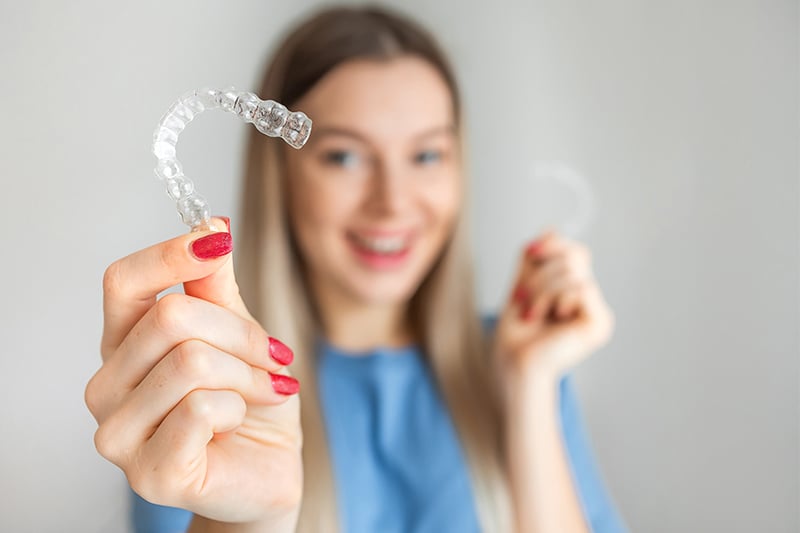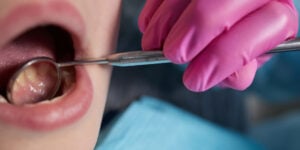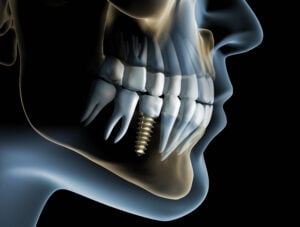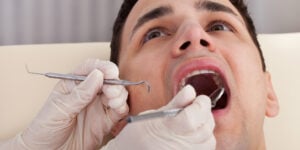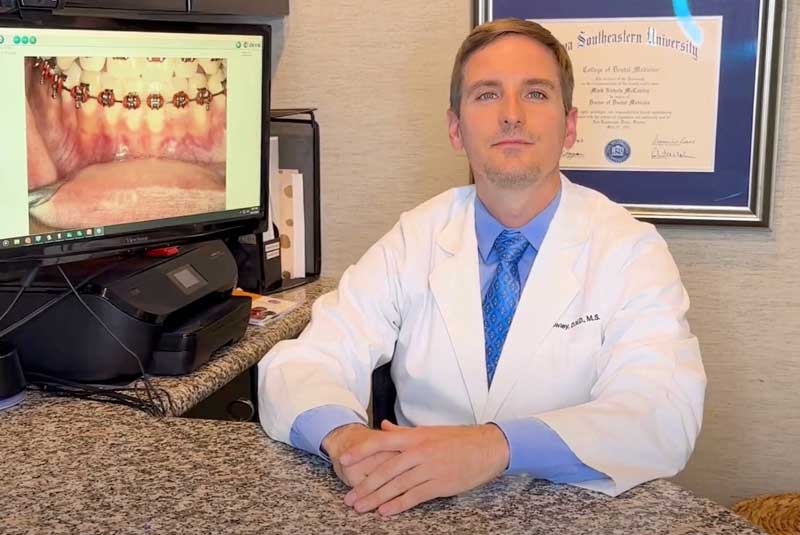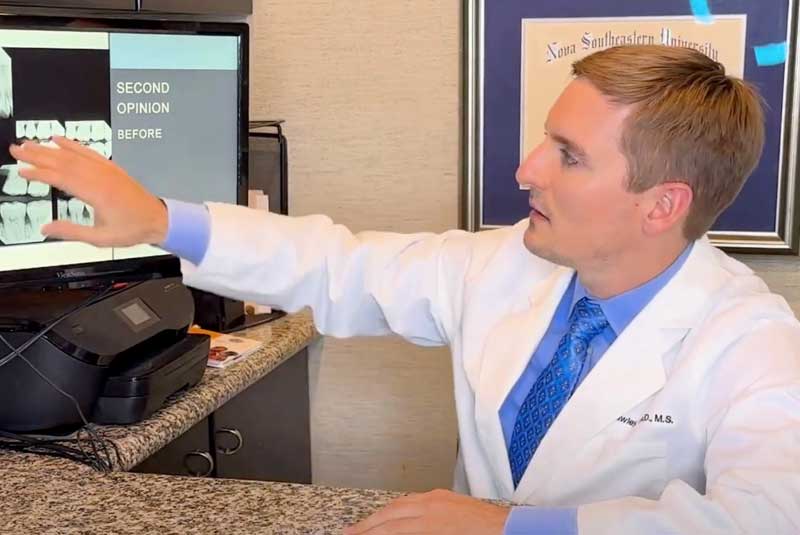| ✅ Reviewed by Dr. Tom McCawley | 🕒 Reading time: four minutes |
Clear aligners like Invisalign® have transformed orthodontic treatment, making it easier than ever to correct misaligned teeth discreetly. However, while Invisalign offers many benefits, some patients notice changes in their gum line and worry about gum recession.
At the McCawley Center for Laser Periodontics and Implants, we specialize in gum health and want to make sure your treatment plan supports, not harms, your oral health.
In this blog, we will cover what causes gum recession during Invisalign treatment, how to protect your gums, and what to do if you are already noticing signs of gum recession.
Can Invisalign Cause Gum Recession?
Invisalign does not directly cause gum recession, but it can contribute to gum issues under certain conditions, especially if there is already underlying periodontal disease or poor oral hygiene.
Here are some common reasons gum tissue might recede during treatment with removable aligners:
- Plaque accumulation from food particles trapped under aligners
- Excessive pressure on the gum line or tooth root due to uneven movement
- Aggressive brushing or improper oral care routines
- Pre-existing gum inflammation or signs of gum disease
- Skipping regular check-ups or ignoring early signs of gum problems
If these factors go unaddressed, the risk of gum recession increases, and patients may begin to see more exposed tooth roots, sensitivity, or even loose teeth over time.
How to Avoid Gum Recession with Invisalign
The good news is that you can protect your gums and enjoy the benefits of Invisalign with proper care and prevention.
1. Start with a Periodontal Evaluation
Before beginning any orthodontic treatment we strongly recommend a periodontal exam. This includes checking for plaque buildup, early signs of gum disease, and the health of your soft tissues.
2. Clean Thoroughly and Gently
Removable aligners make it easier to brush and floss, but they also create opportunities for plaque accumulation. Maintain good oral hygiene with:
- Gentle brushing techniques using a soft-bristled toothbrush
- Daily flossing or using a water flosser to remove food particles
- Antimicrobial mouthwash to keep bacteria under control
It is important to remember that aggressive brushing or using a hard-bristled toothbrush can harm your gum tissue and accelerate gum recession.
3. Keep Up with Regular Cleanings Over the Course of Treatment
Visit your general dentist for routine cleanings and evaluations throughout your treatment to monitor for any early signs of gum issues and ensure your oral health stays on track.
4. Do Not Ignore Gum Sensitivity or Bleeding
Bleeding during brushing, increased sensitivity, or noticing that teeth appear longer than usual may be signs of a problem. These changes should not be ignored and should be evaluated promptly to prevent further complications.
5. Monitor the Fit of Your Aligners
Ill-fitting aligners can place uneven pressure or excess pressure on the gums and bone. If trays feel too tight, rub against the gumline, or cause irritation, notify your provider. Adjustments may be needed to prevent long-term impact on gum health.
| 😁Orthodontic treatment can sometimes shift the position of the gums. While this change is not always harmful, it can create the appearance of gum recession or make teeth look longer. For some patients, these changes can cause sensitivity or aesthetic concerns, even if the gums are otherwise healthy. |
Gum Recession Treatment in Ft. Lauderdale, FL
If you are concerned about receding gums or have experienced gum recession after orthodontic treatment, we can help.
To book an appointment at our periodontal office in Ft. Lauderdale, FL, call (954) 807-4829 or visit us at 800 East Broward Blvd #706 Fort Lauderdale, FL.
FAQ: Invisalign and Gum Recession
Not directly, but it can reveal or worsen recession if gum disease or poor hygiene is already present. The key is monitoring and managing your gum health during treatment. goes here
Brush gently with a soft toothbrush, floss daily, use antimicrobial mouthwash, and get regular checkups. Keeping plaque and bacteria under control is essential.
Yes, if retainers fit poorly or apply excess pressure, they can irritate the gums and contribute to recession over time.
If you neglect oral hygiene or wear aligners improperly, Invisalign can lead to plaque buildup, risk of tooth decay, and gum issues. With proper care, it is very safe.
Gums do not regrow on their own once they have receded. However, minimally invasive procedures can help restore the gum line and protect exposed roots.
Yes, especially if plaque is not removed regularly or aligners are not cleaned. This can increase your risk of gum disease and should be treated quickly.



